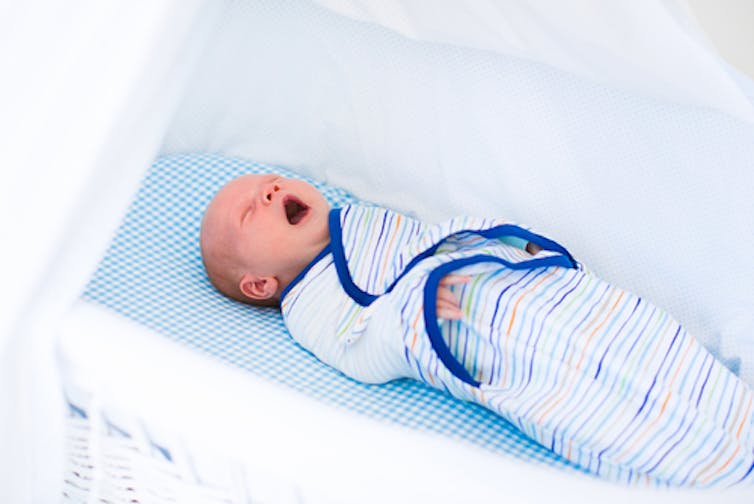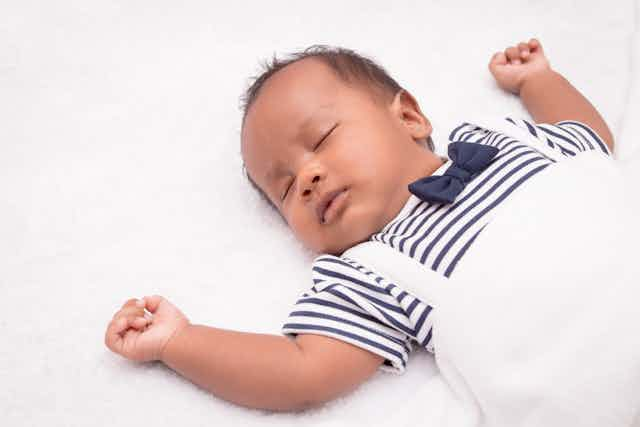I recently read an X-ray study of an infant who died while sleeping with a parent. I am a pediatric radiologist, and in cases where an infant has died unexpectedly, we often obtain X-ray images to make sure that the infant does not have skeletal fractures or other signs of injury that might suggest that he or she was the victim of child abuse. Most of the time we find no such evidence.
Yet every infant death is heart-wrenching, above all for the parents who wake up to discover their infant limp and lifeless.
Each year, about 3,600 U.S. children under the age of 1 year die suddenly and unexpectedly. Such deaths are especially common in babies between 1 and 4 months of age, perhaps because younger infants are less capable of repositioning themselves and crying out for help. For reasons that are unclear, such deaths are also slightly more common among boys than girls.
While all infant deaths are not preventable, many are. A 2010 investigation of hundreds of deaths in North Carolina showed that as many as two-thirds may have been attributable to ill-advised sleep practices, such as the use of unsafe bedding and sleeping with adults. Many are thought to be due to suffocation, when the baby’s airway becomes blocked or when a larger person rolls over and prevents the baby’s chest from expanding during breathing.
The ABCs of safe sleep
Efforts to prevent such deaths have led the American Academy of Pediatrics to formulate a policy on safe infant sleep, key points of which can be summarized as the ABCs of safe sleep:
A – Alone. This does not mean that babies should be put to bed in a room separate from parents. It does, however, mean that infants should not sleep in the same bed. The reason for this is that parents may move during sleep in ways that interfere with babies’ breathing or even crush them. Inadvertently dozing off while breastfeeding or cuddling an infant is just as hazardous as intentionally co-sleeping.
B – Back. Babies should always be put to sleep on their backs. There is nothing wrong with placing healthy babies on their tummies to play, but on the back appears to be the safest position for sleeping. One possible explanation is the fact that babies lying on their bellies are more likely to rebreathe the air they exhale, causing blood levels of carbon dioxide to rise as oxygen falls. This recommendation applies throughout the first year, but it is especially important in the first six months after birth.
The American Academy of Pediatrics policy on safe sleep explicitly contradicts the outdated view that back-sleeping increases the risk of choking. While it is true that many infants experience gastroesophageal reflux, familiar to parents as “spitting up,” healthy babies protect themselves against aspiration. Parents should also avoid raising the head of the crib. It doesn’t reduce the risk of reflux and can cause babies to slide into a dangerous position.

C – Crib. Cribs and bassinets that meet current safety standards are the safest places for babies to sleep, while chairs and sofas should be avoided. A firm surface prevents the baby’s face from becoming caught in a fold or indentation. Likewise, the crib should be empty of loose bedding, pillows, bumpers and toys, any one of which could cause entrapment and suffocation. Too many coverings can also increase the risk that a baby will overheat, an important consideration because temperature regulation is not fully developed in infants.
Of course, there are other steps parents can take to ensure that their babies sleep safely. One is to prevent exposure to cigarette smoke, which appears to increase the risk of sudden infant death. Unsurprisingly, parental intoxication and illicit drug use also appear to place babies at greater risk. Another key factor is making sure that others who care for the baby, such as family members and daycare workers, understand the importance of adhering to the ABCs of safe sleep.
It is important to avoid stigmatizing parents who have lost an infant. In many cases, like the baby whose X-rays I read, we never know for sure what caused the death. Yet there are simple steps every parent can take to enhance the safety of sleeping infants, and it all begins with education. My colleagues and I hope that by educating parents about the ABCs of safe sleep, we may be able to prevent hundreds – perhaps even thousands – of infant deaths every year.

